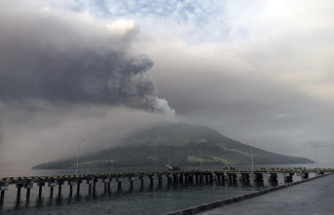The summer storms so common in these days, they can be very dangerous, both while they are occurring as per the embolsamientos of water that can form on the roads and streets. Aquaplaning is described as floating or sliding of the wheels, in particular the guidelines, on a surface that is highly aqueous, losing contact with the asphalt. It is one of the phenomena more dangerous in the driving and occurs at the passing rafts of water or large plateaus in the pathway that can lead to momentary loss of direction.
why does it occur? From the RACE details to a bad conservation of the pavement affects the safety of users that use the tracks, especially when the weather conditions are bad. Improper drainage of the street or highway is one of the causes that causes the water not to seep through what is deposited in the driveway, favoring aquaplaning.
If this lack of drainage, we add a few tires of poor quality, in poor condition, worn, or with inadequate pressure, the risk of aquaplaning increases significantly, especially if we continue to unavelocidad high.
At low speed, the tires hit the water accumulated and the cut . That is to say, they are able to evacuate successfully, and remain in contact with the road. If you ride your bike at high speed, the water accumulates in the front of the tires and, if the speed is very high, the water has just raised the tires from the road surface. The speed thus becomes one of the factors that most influence on the aquaplaning because the tyres do not give them time to evacuate the water.
Also influenced by: the design of the tyre tread , which can help to channel better or worse water; the size of the tire, since a greater area of contact with the surface, the less is the danger; the depth of the drawing, because if it is worn, the evacuation will be less effective (the legal is 1.6 mm but the recommendation is that the depth is above 2 mm); the tyre pressure –both by excessive pressure is as below as recommended by the manufacturer; if the water is combined with oil, dirt and salt, its density increases and there is more risk of skidding; the type of transmission, since according to circumstances the 4×4 may have more risk of aquaplaning that the two-wheel-drive; and the weight of the vehicle, since the lighter, more risk.
What to doSince the RACE explained that it is not always possible to detect the depth of a puddle of water, so that if you get close to one or to an area with stagnant water, the best recommendation is to prevent the risk by reducing the speed.
you will Notice that you are suffering aquaplaning when the wheels begin to spin and increase the engine revs by reading the incorrect speed indicator. In that case, you need to lift the foot from the accelerator and depress the clutch. At the same time it is important to put the straight direction and, without stopping, hold the steering wheel tightly until the tires get grip out of the area with water.
If we get out of the puddle with the wheels straight we will be able to avoid the accident ; otherwise, it is most likely that there is a oversteer. This reaction occurs when the rear end loses traction. In this case, what you need to do is turn the steering wheel to the same side that is causing the slippage –what is known as make a contravolante - with the goal of putting the car in a straight line. When the car regains grip, what you need to do is go by placing progressively the wheels in the direction of the track and accelerate smoothly, as this is a maneuver of extreme and difficult to control.
Date Of Update: 12 September 2019, 19:01











